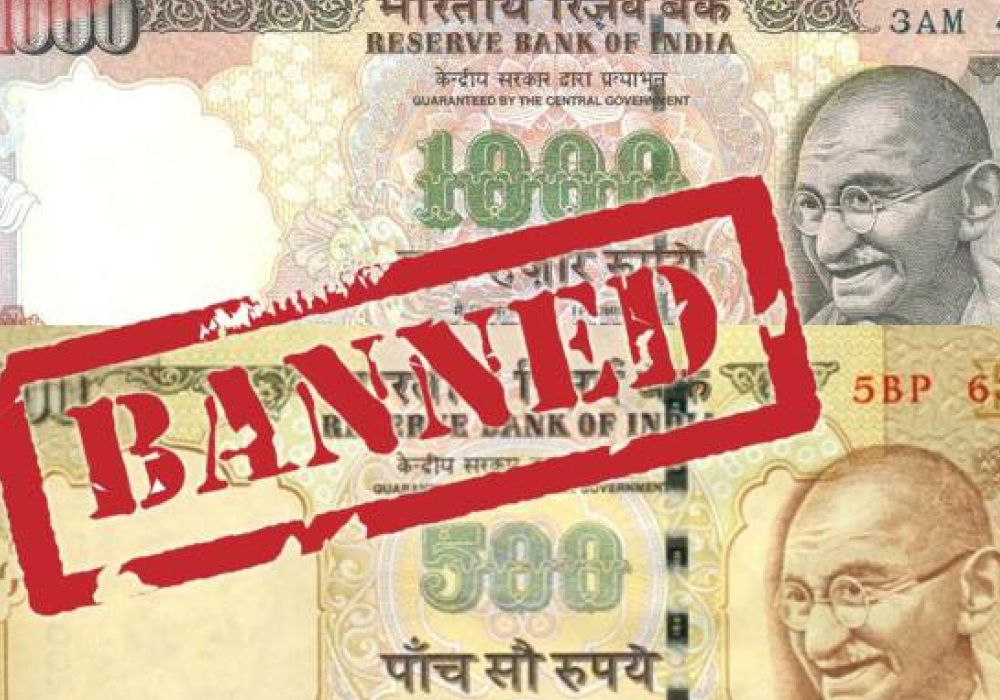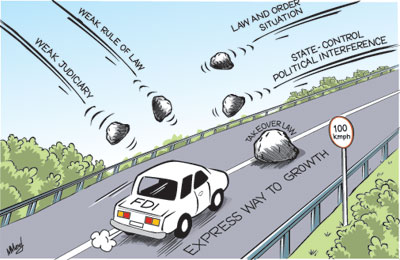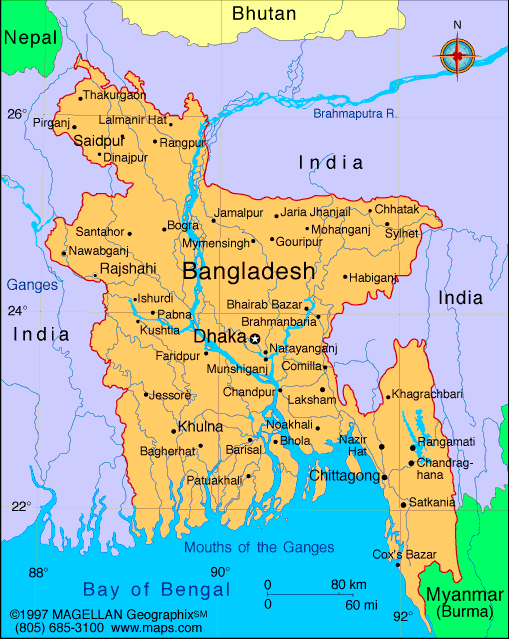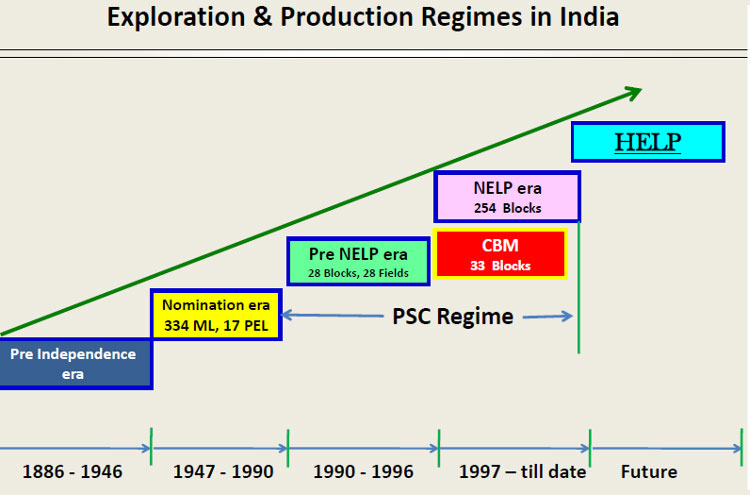Pratim Ranjan Bose
While liberalising India in 1991,
P V Narasimha Rao predicted the end of the road for political and economic
monopolies, ensuring growth.
Part of his expectations came
true.
Congress, which nearly
monopolised power till 1980’s, turned anaemic. The benefit mostly went to
regional parties. The GDP of India grew more than five times in 25 years. Hyderabad became an IT
city and Chennai is now auto-hub.
But, Rao didn’t anticipate the
rise of ‘politics of cartelization’ that dominated India in the last decade.
National and strategic interests,
including a defence deal with Sri
Lanka , became hostage to micro-interests.
Parallel power centres bred reckless corruption. And growth became a casualty.
Rise of corrupt India
Many investors are now avoiding
Chennai because politics has become too greedy and every successive party in
power is asking for a higher cut– anything in excess of 10 percent of project
cost.
The typical fallout is a dramatic
rise of the cash-economy. According to the largest banker, SBI, its daily cash
dispensation increased manifold over the last decade.
A parallel rise in the share of
high denomination notes of Rs 500 and Rs 1000 from 46 to 86 percent of total
currency circulation, between 2006 and 2016, indicate part of this cash was
stored.
The increasing cash intensity was
disproportionate to India ’s
stagnant tax-GSDP ratio of nearly 17 per ent – lowest among BRICS – and low
Income Tax base. According to NITI Ayog, only one per cent Indians out of 1.2 billion pays taxes.
Compare this with the dramatic
rise in unofficial election expenses in India and you know, politics encouraged
tax evasion and black money generation for own benefit.
Reimaging India
The prevailing paradigm had
raised some serious doubts about the efficacy of democracy in delivering public
policy goals and ensuring better life to its people vis-à-vis the single
party-ruled China that has
50 percent more forex reserve than India ’s GDP.
In China in 2010, when they were still
discussing political reforms, as was promised by Deng Xiao Ping, I noticed
strong resentment of the Chinese against the Indian democracy. They felt it’s a
chaotic system that they could do without.
Narendra Modi of BJP came to
power in 2014 with a landslide victory – the first of its kind since 1984 –
promising a change of this political narrative.
Over the last two years, the
government gave options to bring money stashed in abroad and disclose
unaccounted earnings. Treaties were entered with tax-heavens like Cyprus and Mauritius . Switzerland
agreed to exchange account information on Indians from 2018.
Some responded to these warning
signals but most didn’t. Despite encouragements, cashless transactions
staggered at around 10 per cent in volume terms. According to SBI, daily cash
dispensation increased by 60 per cent over last three years.
Clearly, the cash economy thought
it is too big to be messed with. Modi decided to do the unthinkable. He bombed
them to redefine the image of India
and Indian democracy that was considered toothless.
On November 8, the nation was
awestruck to hear the Prime Minister announcing a midnight ban on high
denomination notes, constituting 86 percent of the currency in circulation to
flush out idle, unaccounted cash or black money.
The demonetised currency of Rs
500 and 1000 are replaced by the new currency of Rs 500 and 2000. The partial
demonetisation scheme is scheduled to be over on December 30.
Huge step
Politically, the ferocity of the
decision is comparable to the nationalisation of coal, banking and insurance
sectors, between end 1960’s and early 1970’s taken by Indira Gandhi.
Some were unhappy that government
is infringing on their ‘democratic right’ by setting (temporary) withdrawal
limits to ration the new currency and, literally forcing them to take cashless
transaction modes like plastic or digital money.
The politics of cartelization
that was put on the back foot over the last two years, saw a danger. Leftist
dominating the intellectual space breathed fire. Nobel laureate Indian
economist,
Amartya Sen –a known political
adversary of Modi - referred the decision as ‘despotic’. One might wonder how
Sen would react to Chinese President Xi Jinping’s decision to close down 100
million tonne steel and nearly 500 million coal production - robbing millions
of jobs – to correct market anomalies.
Forbes had taken a high moral
position. In China Xi had put them on double muzzle, as part of his political
consolidation and crackdown against corruption since end 2012. They will sing
in tune if Modi can make India
stronger.
‘Unusual decision’
American economist Paul Krugman
described Modi’s decision “unusual” as it didn’t follow the textbook principles
of replacing high-value currency by low lower denomination notes. This made
Krugman sceptic about the gains. He, however, didn’t trash the initiative.
As a journalist who had been
tracking the issue closely, I don’t have much explanation for issuing the Rs
2000 bill either. But I have a hunch that it’s bait for further action. Only
time will tell if I am correct.
Meanwhile ‘demonetisation Guru’,
Kenneth S. Rogoff of Harvard is watchful.
“Over the long run, there will be
a lot of studies: Is it a success? Is it something people are going to
remember? Does it inspire other laws and other changes that energise people
against corruption?” a The New Yorker columnist quoted him saying.
He has little doubt that higher
degree of corruption is behind India ’s
poor show vis-à-vis China .
“If you want to know why India
has not grown as much as China ,
as bad as the corruption is in China ,
it’s worse in India .”
He also has two specific
observations to make on the move. (a) Modi is “aiming, really, at the
psychology”. And (b) this disruption should reduce India ’s appetite for cash in the
future. “When you take bills out of circulation at short notice, that’s going
to cut cash demand in the future,” he said.
And, I think he is correct on
both.
While detailed information is not
yet available. A snapshot of transactions through major banks in the East, the
most cash-intensive part of the country, says non-cash transactions increased
from 10 per cent to 25 per cent of total.
Even the predominantly cash-based
agri-input trade is now turning cashless which means the planners will have a much realistic data sheet on money trail
and purchasing power of the rural economy in the future.
If I am not wrong, the rise in
cashless transactions will give the central bank room to cut total currency
requirement. This means the government will have more headroom to fund mega
infrastructure projects. We are likely to get a direction on the same in the
annual Budget.
As demonetisation has brought
idle money into the system, banks will be under pressure to increase credit
flow. This, in turn, means interest rates should fall, if not today them
tomorrow surely.
The other big impact is, once the
share of black in the economy is down, there will be less incentive to pay in
black. It means maladies of the real-estate sector will be addressed to a large
extent.
If the current trend is of any
significance, pressure will intensify on the corrupt, in the days to come. The exemplary raid onTamil Nadu Chief secretary’s office and residence is a case in point.
The recovery of Rs 135 crore in
cash and 177 kg of gold from a sand mafia also from Chennai, on the same day,
should make many sweating in their pants.
More changes coming
A day after announcing
demonetisation, Modi went a step ahead to declare his next big war against the
unaccounted holding of gold and property through frontmen. His government has already
strengthened Benami Transactions Act in October.
On Sunday, December 26, barely
four days ahead of the December 30 closure of the demonetisation scheme, Modi
reiterated that this is just the beginning of the firework.
“I am not going to stop at this.
I will expose the history of corruption of 70 years since Independence ,” he said
There is reason one should
believe this is no empty threat. First, having taken the ‘unusual step’, Modi
created a huge psychological impact. It would be foolish for the government to
lose the advantage. And, he is no fool.
Second, in cricket – the most
popular game in India
– once the batsman steps out of the crease, he has to either hit the ball or
else be stumped. Modi has to win this game.
It doesn’t mean the contest will
be one sided. The experience of last 45 days shows that the government failed
to judge the tremendous resilience of cash hoarders in finding newer ways to
launder money.
Large hoarders hired services ofthe poor, for a cut, to split the booty and avoid tax glare.
This is why more than $10 billion were deposited in zero-balance financial inclusion accounts. Some were fool
enough to deposit in crores even and will now face tax authorities.
Finally, it brought out the
weaknesses of Indian banking system to the open. In August 2014, the Prime
Minister launched a financial inclusion programme. The scheme was enticed by
low-cost life insurance coverage.
But banks clearly took it easy.
At least 60 percent of 1.7 million tea workers in Bengal and Assam and a
substantial chunk of 400 thousand jute workers didn’t have accounts when
demonetisation was announced.
Demonetisation also exposed
corruption in banking circle. Many bank officials diverted new currency to hoarders through the backdoor, while legitimate
customers kept waiting at the counter.
Nearly a dozen such cases are
unearthed by investigating agencies over the last few weeks. And many bank
officials were sacked.
Economy is not bombed
Many pundits believe in his
effort to bomb the corrupt, Modi actually bombed the economy. I don’t believe
this.
First and foremost, the rural
economy that pulls consumption is largely unaffected. I have personally
travelled in the hinterlands and monitored reports from Eastern
India and, I didn’t find many traces of impact on agriculture and small trade.
It doesn’t mean disruption didn’t
affect them. It only means they absorbed the shock, too soon.
The funniest part is responding
to the media speculation on agriculture, the government immediately relaxed
import norms for wheat. Now the same media is criticising the decision as there
is a bumper wheat crop this year.
The crackdown will surely impact
the sections of the informal economy that were avoiding a cleaner business
model by choice. Sand and stone miners, wholesalers, SMEs, jewellers, labour
contractors, textiles industry, truck operators - fall in this category.
They are no small fellows. They
became rich by dodging tax and/or flouting laws. Garments industry in Jalandhar
and Ludhiana
thrived by paying workers less. Years of fine policy making couldn’t deter
them, due to political patronage.
That jute and plantation industry
were dealing in cash for so long is a glaring example. Crude force saw them giving
way to the much-awaited change There are more fundamental
reasons why I think the economy will recover from the temporary shock, sooner
than perceived.
Modi inherited an economy in
tatters in 2014. Excessive greed created huge idle capacities in the power
sector; road and highway construction was stalled impacting job creation and
blocking huge bank finance that in turn was creating liquidity-crisis.
The gas sector was in disarray in
every front. Fertiliser was in short supply.
Series of scams dislodged private
mining activity. Courts were running shadow government with policy U-turns
becoming a norm. The government had low credibility. And, no investor was ready
to invest. Most were out of money. The world community was losing interest in India .
The government couldn’t address
every problem. Private investment in manufacturing, for example, is still
low. But the achievement is not insignificant
either.
The buoyancy in PSU coal mining
activities covered slow movement in captive coal and iron ore mining, solved
energy crisis, brought idle power capacities back into the fray, lowered coal
import requirement to nearly half thereby releasing pressure on current account
and, even triggered growth in mining equipment sales.
Merger and acquisition are back
in power, unlocking resources in banking. There is no fertiliser crisis
anymore. Steel prices are showing signs of firming up. And, highway
construction is back in full swing.
After five long years of
de-growth, construction equipment market is witnessing 40 per cent growth in
sales. It means two things a) job creation is back and b) overall growth will
be back soon due to the common multiplier effect.
Here are three examples to prove
my point a) Robust growth continues in Infrastructure equipment finance b) Bloomberg quit reports after 20 per cent fall in November car sales up by
seven per cent in December.
c) Micro-finance institutions
report normal recovery, except in three big States where Opposition is pushing
for a farmers’ loan waiver. MFIs operate in the rural and get payments in cash.
Will Modi win this game?
This is a big question that will
be answered amply in the four-corner UP polls where caste and creed rule the
roost. BJP in my assessment was the second most popular party here until
November. If they do any better it will be for public support to
demonetisation.
The party meanwhile won the civic polls in Chandigarh
and attributed it to demonetisation
My personal reading based on the
travels to the hinterlands of Eastern part India - that is most averse to
change and is the biggest victims of the corrupt politics of cartelization – is
Modi’s fight against corruption won the hearts of majority voters irrespective
of class and creed. The support is most overwhelming among the poor.
But even if he doesn’t win,
politics will surely change hereafter as Modi’s actions affected illicit
resource flow to every party including BJP. They have to brace for change.



















